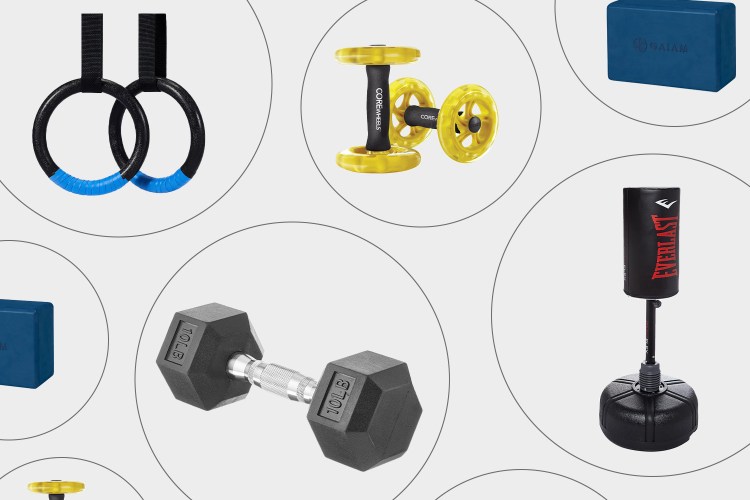The dust has more or less settled after two years of executives hemming and hawing on return-to-office policies, and flexible work schedules have emerged victorious. According to a survey published last month, 74% of U.S. companies “are using or plan to implement a permanent hybrid work model.”
Theoretically, that seems great across the board — less time in the office means more time sleeping, running, cooking, reading, playing with kids…and going to the bathroom.
Since the pandemic began, remote employees have naturally embraced the opportunity to use their bathrooms pretty much whenever they want. As long as we’re not on a call, we’re free to sit on the toilet. (Though some sickos didn’t get that memo on that, to be sure.) We don’t have to travel down some Severance-ass hallway to reach the loo, and we don’t have to worry about what other people think about the frequency of our adventures.
Still: the key word in the business world’s new workflow is “hybrid.” Meaning: some of the time, going forward, we have to be in an office. And if you’ve gotten used to doing your business whenever you see fit, sharing a bathroom with a bunch of colleagues again might actually prove a bit of an adjustment.
Naturally, there’s already a stupid term for workers too shy to go #2 in the office: “workstipation.” Right around 70% of Americans got so out of practice at pooping at work (and other public places) that they’re avoiding it entirely, which isn’t a very sound strategy; it just turns you into a smelly hot air balloon.
How about #1, though? I’ve spoken to friends who specifically treasure their WFH days because they know they can throw back a day’s worth of water, coffee, La Croix, you name it, with no pressure to tamp down their bathroom side quests. If they do have to be in the office, meanwhile (or traveling, or going to their kid’s soccer tournament, etc.) they’ll just drink way less.
Is that a recipe for longterm success, though? Should one’s hydration — pretty damn important, if not the Holy Grail that water marketers like to pretend it is — be as hybrid as one’s work schedule? Just to accommodate the whims of a bladder? What if you could foster a more robust and reliable cadence, to be leaned on in settings both private and public? In other words, it is possible to rewire a “small” bladder? Absolutely. Start with this guide.

Dear urinary diary
You’re going to want to keep track of two things:
- How often you urinate throughout the day
- How much time passes between those urinations
Diligently record both over two or three days that you’re working from home. While a “normal” urinary frequency varies by age, gender and all sorts of other criteria, think around six to seven trips to the bathroom in a 24-hour span. (It’s really an 16-hour-or-so window for most people, considering we spend a third of our day in bed. That said, a third of grown men get up to pee during the night…so if that describes you, be sure to count it in your journal.)
What use can one glean from the indignity of tallying toilet visits like a third grader? Well, experts recommend that we empty our bladders every three hours or so. If your total has you around 12 or 15 pees a day, that math doesn’t add up.
“Just in case”
In fact, you may be suffering from a pesky case of the “just in case” pees. You’re peeing before a call, before picking up milk, before walking your dog around the block (so he can pee, too). These are the sort of bathroom trips you probably wouldn’t make during a conventional day at the office — that’s assuming you don’t deprive yourself of fluids in public — yet you’ve gotten used to taking at home.
Unfortunately, this sort of behavior does your bladder no favors. Like any other organ, the bladder has the brain on speed-dial. If you get in the habit of always picking up on the first ring, though, it can get spoiled, and forget how to operate efficiently. As Healthline points out, stress signals that you need to pee tend to make their way up to the noggin when the bladder is only 25% full. But it takes hours for a bladder to fill up. Functionally, it should be able to defeat whatever initial urge you’re feeling. The road to becoming a better “pee-er” starts with recognizing this fact, and showing your bladder some tough love.
Retraining!
Bladder retraining programs exist because 25 million adult Americans have urinary incontinence, an uncomfortable condition where urine accidentally leaks from the urethra. (It’s most common amongst women over the age of 50.) The idea is to regain some bladder control by extending your “urination intervals.” Different authorities online stump for different versions of retraining, but it’s all pretty similar.
Let’s say I’ve crunched the numbers and my average urination interval is only an hour. That’s not ideal. But if I tack on 15 more minutes before my next go, and observe that for every next go, I can slowly wean it from the instant gratification system, and optimize it for whatever setting I find myself in on a given workday.
Harvard Health recommends emptying your bladder “first thing in the morning,” and sticking to whatever schedule you’e laid out for yourself — even if, for whatever reason, 9:15 a.m. rolls around (after an 8:00 a.m. initial pee) and you don’t feel the urge. Let it out anyway. Don’t be a bathroom hero, especially in those early days. Properly retraining your bladder can take months.
You’ll work up to holding it longer, and longer (aim for three to four hours down the line), but the endgame here definitely isn’t to walk around with a full bladder for hours on end. Ironically, that sort of behavior actually atrophies the bladder…leading to UTIs in the short-term and even incontinence long-term. Using your bladder is the whole point here. Just not as much as you may have gotten accustomed to during a Tuesday afternoon in your living room “office.”
One important note? Don’t try to game the system by ditching your normal hydration intake. Drink water, lots of it; the University of Wisconsin School of Medicine specifically says you should drink at least four cups of water a day, on your way to eight a day, in order to familiarize your bladder with the sensation of holding 10 to 13 ounces of liquid at a time. If drinking that much water starts to feel like a chore, you can level back down a bit after fine-tuning your bladder.
There are other methods that you might seek out to complement (or replace) this sort of guinea pig experiment. Kegel exercises (performed with an empty bladder, intended to strengthen urinary control via successive pelvic contractions) are easy to master and well-worth your time. Cutting back on “irritant” fluids like soda, seltzer, coffee, and fruit juices can only help. An honest discussion with your physician can determine which medications that you take, if any, are interfering with your urinary frequency. And Botox injections, believe it or not, are a capable candidate for those who’ve exhausted every other bladder control option.
But you might be surprised by how far an honest appraisal can take you. It’s not the sort of wellness training program you’re likely to bring up at your next dinner party, but then, it could make your time at that dinner party far more enjoyable.
Whether you’re looking to get into shape, or just get out of a funk, The Charge has got you covered. Sign up for our new wellness newsletter today.























